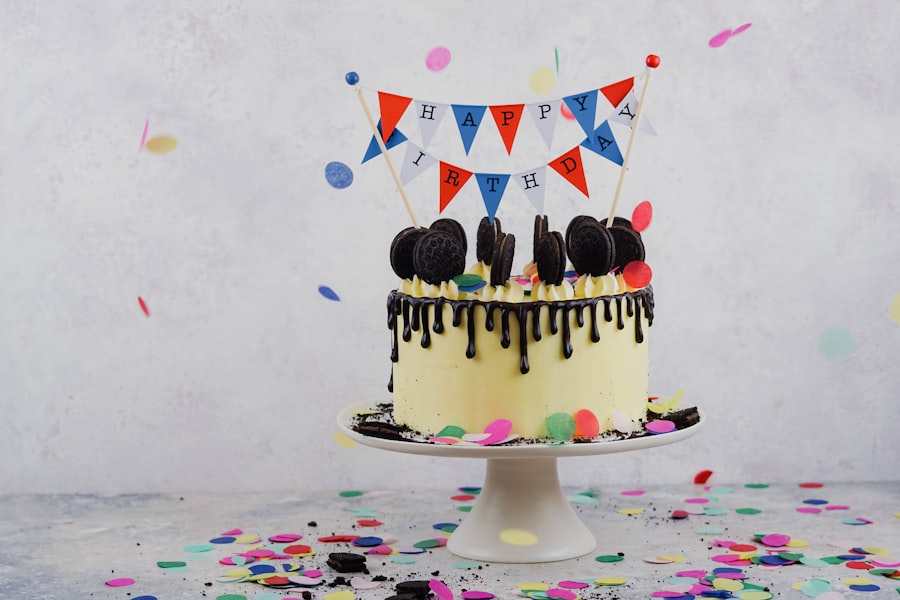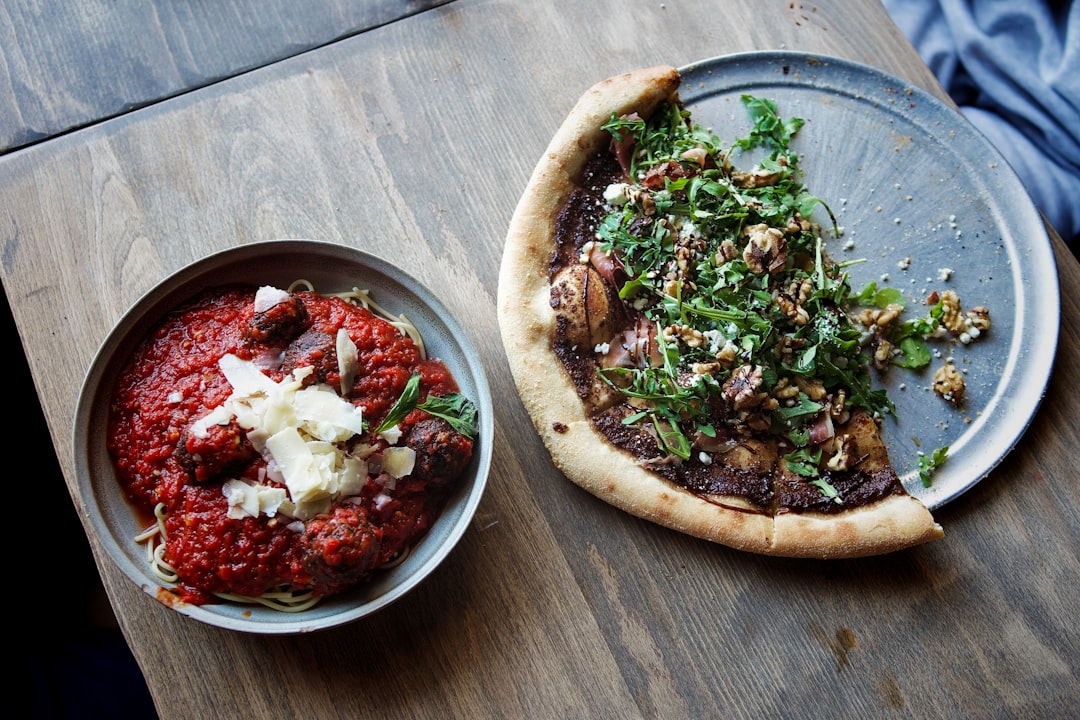The history of cake making is a rich tapestry woven through centuries, cultures, and culinary innovations. The earliest cakes can be traced back to ancient civilizations, where they were more akin to bread than the sweet confections we know today. The Egyptians are credited with creating the first cakes, which were made from a mixture of flour, honey, and nuts.
These early cakes were often baked in the shape of round loaves and were typically reserved for special occasions or religious ceremonies. As time progressed, the Greeks and Romans further refined cake-making techniques, introducing ingredients like eggs and milk, which contributed to a lighter texture. During the Middle Ages, cakes began to evolve significantly.
The introduction of sugar from the Middle East transformed cakes from simple bread-like structures into sweeter, more elaborate desserts. The use of spices such as cinnamon and nutmeg became popular, reflecting the trade routes that brought these exotic flavors to Europe. By the 17th century, cake making had become an art form in England, with the emergence of rich fruitcakes and sponge cakes.
The invention of baking powder in the 19th century revolutionized cake making, allowing for lighter and fluffier textures that were previously unattainable. This period also saw the rise of elaborate wedding cakes, often adorned with intricate decorations that symbolized wealth and status.
Key Takeaways
- Cake making has a rich history dating back to ancient times, with the first cakes being more bread-like and sweetened with honey.
- Different occasions call for different types of cakes, such as layered cakes for weddings, cupcakes for birthdays, and bundt cakes for casual gatherings.
- The art of cake decorating involves various techniques like piping, fondant sculpting, and edible printing to create stunning designs and themes.
- Popular cake flavors and combinations include classic choices like chocolate and vanilla, as well as trendy options like salted caramel and red velvet.
- Baking tips for perfect cakes include using room temperature ingredients, properly measuring flour, and rotating the cake pans halfway through baking for even cooking.
Types of Cakes for Different Occasions
Cakes serve as a centerpiece for many celebrations, each type tailored to fit specific occasions. For birthdays, the classic layer cake is a perennial favorite, often featuring vibrant frosting and personalized decorations that reflect the interests of the celebrant. Chocolate cake, vanilla sponge, and red velvet are popular choices for these festive gatherings.
In contrast, wedding cakes are typically multi-tiered and intricately designed, symbolizing the couple’s union. These cakes often feature flavors like fruitcake or buttercream and are adorned with delicate sugar flowers or fondant decorations. Holidays also inspire unique cake varieties.
For instance, during Christmas, traditional fruitcakes laden with dried fruits and nuts are common, while Easter often brings about the creation of lamb-shaped cakes or carrot cakes adorned with cream cheese frosting. Cultural celebrations introduce even more diversity; for example, in Mexico, tres leches cake is a staple for birthdays and special events, soaked in three types of milk for a moist texture. Each occasion calls for a specific type of cake that not only satisfies the palate but also enhances the celebratory atmosphere.
The Art of Cake Decorating

Cake decorating is an intricate art that transforms a simple baked good into a stunning centerpiece. This craft requires both creativity and technical skill, as decorators must master various techniques to achieve their desired aesthetic. Fondant is a popular medium for creating smooth surfaces and intricate designs; it can be rolled out and draped over cakes to create a polished look.
Additionally, decorators often use buttercream for piping flowers or writing messages, allowing for a more textured appearance that can evoke different themes. Beyond traditional methods, modern cake decorating has embraced innovative techniques such as airbrushing and edible printing. Airbrushing allows decorators to create gradients and intricate designs with ease, while edible printing enables them to transfer images directly onto cakes.
The use of natural dyes derived from fruits and vegetables has also gained traction among decorators who prioritize health-conscious options without sacrificing visual appeal. The art of cake decorating is not just about aesthetics; it also involves understanding flavor pairings and textures to create a harmonious dessert that delights both the eyes and taste buds.
Popular Cake Flavors and Combinations
| Cake Flavor | Popular Combinations |
|---|---|
| Vanilla | Vanilla with raspberry filling |
| Chocolate | Chocolate with salted caramel |
| Red Velvet | Cream cheese frosting |
| Carrot | Walnuts and cream cheese frosting |
The world of cake flavors is vast and varied, offering something for every palate. Classic flavors like chocolate and vanilla remain perennial favorites due to their versatility and widespread appeal. Chocolate cake can be paired with rich ganache or light whipped cream, while vanilla serves as an excellent base for fruit fillings or flavored frostings.
However, contemporary bakers have expanded the flavor palette significantly, introducing unique combinations that surprise and delight. For instance, lemon blueberry cake combines the tartness of lemon with the sweetness of blueberries, creating a refreshing dessert perfect for summer gatherings. Similarly, salted caramel has emerged as a popular flavor pairing, where the sweetness of caramel is balanced by a hint of salt, enhancing the overall taste experience.
Other innovative combinations include matcha green tea with white chocolate or lavender-infused cakes that evoke a sense of calm and sophistication. These flavor profiles not only cater to diverse tastes but also reflect current culinary trends that emphasize creativity and experimentation.
Baking Tips for Perfect Cakes
Achieving the perfect cake requires attention to detail and an understanding of baking principles. One fundamental tip is to ensure that all ingredients are at room temperature before mixing; this helps create a uniform batter that rises evenly during baking. Additionally, measuring ingredients accurately is crucial; using weight rather than volume can lead to more consistent results.
When it comes to mixing, it’s essential to follow the recipe’s instructions carefully—overmixing can lead to dense cakes while undermixing may result in uneven textures. Another vital aspect of baking is temperature control. Preheating the oven is non-negotiable; placing a cake in an unheated oven can lead to poor rising and uneven baking.
It’s also important to rotate the cake halfway through baking to ensure even heat distribution. Once baked, allowing the cake to cool in the pan for a short period before transferring it to a wire rack prevents sogginess on the bottom. Finally, patience is key when it comes to frosting; allowing the cake to cool completely before decorating ensures that the frosting doesn’t melt or slide off.
A Brief Guide to Cake Ingredients

Understanding cake ingredients is essential for both novice bakers and seasoned professionals alike. The primary components include flour, sugar, eggs, butter (or oil), and leavening agents like baking powder or baking soda. Each ingredient plays a specific role: flour provides structure; sugar adds sweetness and moisture; eggs contribute richness and stability; while butter or oil enhances flavor and texture.
The choice of flour can significantly impact the final product; for example, all-purpose flour is versatile but using cake flour can yield lighter cakes due to its lower protein content. In addition to these staples, flavorings such as vanilla extract or cocoa powder can elevate a cake’s taste profile. Dairy products like milk or buttermilk add moisture and tenderness; sour cream or yogurt can also be used for added richness and tanginess.
For those looking to experiment with healthier alternatives, options like almond flour or coconut sugar can be incorporated into recipes without compromising flavor or texture. Understanding how each ingredient interacts within a recipe allows bakers to make informed choices that enhance their creations.
Gluten-Free and Vegan Cake Options
As dietary preferences evolve, gluten-free and vegan cakes have gained popularity among health-conscious consumers and those with dietary restrictions. Gluten-free cakes are typically made using alternative flours such as almond flour, coconut flour, or gluten-free all-purpose blends that mimic traditional wheat flour’s properties. These alternatives often require additional binding agents like xanthan gum or flaxseed meal to achieve the desired texture without gluten.
Vegan cakes eliminate all animal products, relying on plant-based ingredients instead. Common substitutes include applesauce or mashed bananas in place of eggs for moisture and binding; coconut oil or vegan butter serves as a fat source while maintaining flavor integrity. Non-dairy milk options like almond or oat milk can replace regular milk without sacrificing creaminess.
Many bakers have successfully crafted delicious vegan chocolate cakes or carrot cakes that rival their traditional counterparts in taste and texture.
Cake Presentation and Serving Suggestions
The presentation of a cake can significantly enhance its appeal at any gathering. A well-decorated cake not only serves as a dessert but also as an artistic centerpiece that draws attention. Simple yet elegant presentation techniques include using fresh fruits or edible flowers as garnishes; these elements add color and freshness while complementing the cake’s flavors.
Additionally, serving cakes on decorative platters or stands elevates their visual impact. When it comes to serving suggestions, portioning is key—slices should be uniform in size to ensure everyone receives an equal share while maintaining an aesthetically pleasing appearance. Pairing cakes with accompaniments such as whipped cream, ice cream, or fruit compotes can enhance the overall experience by adding contrasting textures and flavors.
For more formal occasions, consider serving individual mini-cakes or cupcakes that allow guests to enjoy their dessert without needing utensils.
The Role of Cakes in Celebrations and Traditions
Cakes hold significant cultural importance across various celebrations and traditions worldwide. In many cultures, they symbolize prosperity, happiness, and togetherness during significant life events such as weddings, birthdays, and anniversaries. For instance, in Western cultures, cutting the wedding cake represents the couple’s first act together as partners; it is often accompanied by rituals such as feeding each other a slice as a gesture of love and commitment.
In addition to personal milestones, cakes play a vital role in cultural festivities. For example, during Diwali in India, sweet treats including rich milk-based cakes are prepared to celebrate the festival of lights. Similarly, during Chinese New Year, auspicious cakes like nian gao are made to symbolize prosperity for the coming year.
These traditions highlight how cakes transcend mere desserts; they embody cultural values and foster connections among family members and friends during joyous occasions.
Cake Pairings with Beverages
Pairing cakes with beverages can elevate the dining experience by enhancing flavors and creating harmonious combinations. Coffee is a classic accompaniment for many cakes; its robust flavor complements chocolate or nut-based desserts beautifully. A rich espresso pairs exceptionally well with chocolate cake or tiramisu, while lighter cakes like lemon drizzle benefit from a milder brew such as green tea or herbal infusions.
For those who prefer non-caffeinated options, fruit juices or sparkling water can provide refreshing contrasts to sweet cakes. A zesty orange juice pairs wonderfully with vanilla sponge cake or carrot cake topped with cream cheese frosting. Additionally, wine enthusiasts may enjoy pairing dessert wines like Moscato with fruity cakes or port wine with rich chocolate desserts—these combinations enhance both the cake’s flavors and the beverage’s characteristics.
The Future of Cake Making: Trends and Innovations
The future of cake making is poised for exciting developments driven by innovation and changing consumer preferences. One notable trend is the increasing demand for healthier options; bakers are experimenting with alternative sweeteners like agave nectar or monk fruit sugar to cater to health-conscious consumers seeking lower-calorie desserts without sacrificing taste. Additionally, there is a growing interest in incorporating superfoods such as matcha or spirulina into cake recipes for added nutritional benefits.
Sustainability is another key focus area within the baking industry; many bakers are prioritizing locally sourced ingredients and eco-friendly packaging solutions in response to consumer demand for environmentally responsible practices. This shift not only supports local economies but also reduces carbon footprints associated with food production and transportation. Furthermore, advancements in technology are revolutionizing cake making—3D printing techniques are being explored for creating intricate designs that were once labor-intensive or impossible by hand.
As culinary trends continue to evolve alongside societal changes, cake making will undoubtedly adapt to meet new demands while preserving its rich history and cultural significance.



